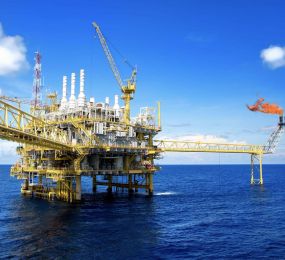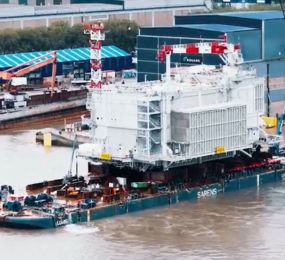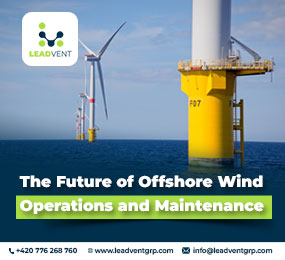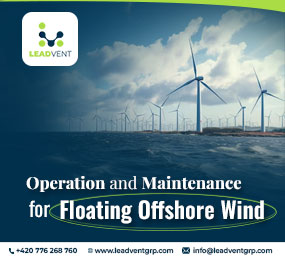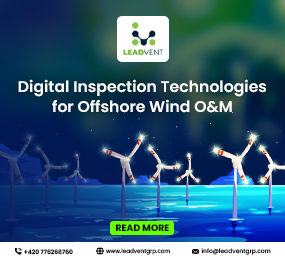Offshore Wind Turbine Operations and Maintenance
Offshore wind energy has emerged as a pivotal player in the global shift towards renewable energy, offering a sustainable and abundant power source. However, offshore wind turbine maintenance presents unique challenges due to harsh environmental conditions and the remote nature of installations. In this post, we'll explore the latest advancements in offshore wind maintenance and highlight the upcoming offshore wind energy event that's set to shape the industry's future.
Key Challenges in Offshore Wind Turbine Maintenance
Maintaining offshore wind turbines involves addressing several critical challenges:
1. Harsh Environmental Conditions
- Corrosion and Wear: Constant exposure to strong winds, high humidity, and saltwater can lead to accelerated corrosion and wear of turbine components.
- Extreme Weather: Storms and hurricanes pose significant risks to both the structural integrity of turbines and the safety of maintenance crews.
2. Accessibility and Logistics
- Remote Locations: Offshore wind farms are often situated far from shore, making the transportation of personnel and equipment both complex and costly.
- Weather-Dependent Access: Maintenance schedules are frequently disrupted due to adverse weather conditions, limiting the ability to conduct regular inspections and timely repairs.
3. High Maintenance Costs
- Operational Expenses: Unplanned maintenance and emergency repairs can lead to substantial operational costs and revenue losses.
- Specialized Resources: Offshore interventions require specialized vessels and skilled personnel, further escalating expenses.
Innovative Solutions for Efficient Offshore Wind Turbine Maintenance
To overcome these challenges, the industry is adopting several innovative strategies:
1. Predictive Maintenance with AI and IoT
- Real-Time Monitoring: Advanced systems utilize AI and IoT sensors to monitor turbine performance continuously, detecting early signs of potential failures.
- Proactive Interventions: By predicting issues before they escalate, operators can schedule maintenance activities more effectively, reducing downtime by up to 30% and cutting maintenance costs by 20%.
2. Robotics and Drones for Inspection
- Autonomous Inspections: Drones and underwater robots are deployed to perform detailed inspections of turbine blades and structures, minimizing the need for manual checks.
- Enhanced Safety: These technologies reduce human exposure to hazardous conditions, improving overall safety and efficiency.
3. Digital Twin Technology
- Virtual Replication: Digital twins create virtual models of turbines, allowing engineers to simulate performance, predict failures, and optimize maintenance schedules.
- Case Study: A floating offshore wind turbine implemented a diagnostic digital twin, successfully detecting anomalies hours before a failure occurred, thereby preventing unexpected downtime.
4. Floating Wind Turbine Advancements
- Deeper Waters: Floating turbines enable installations in deeper waters with stronger wind resources, expanding the potential for offshore wind energy.
- Improved Maintenance: Advancements in floating technology are enhancing structural durability and simplifying maintenance procedures.
Case Studies: Successful Offshore Wind Maintenance Strategies
Case Study 1: Dogger Bank Wind Farm
- Overview: Located off the coast of the UK, Dogger Bank is the world's largest offshore wind farm, utilizing GE's Haliade-X 13 MW wind turbines.
- Maintenance Approach: The project employs advanced predictive maintenance systems and robotics for inspections, resulting in a 25% reduction in unexpected failures and a significant increase in energy production.
Case Study 2: Hywind Tampen
- Overview: Hywind Tampen, located in the North Sea, is the world's largest floating offshore wind farm, providing electricity to Equinor's oil and gas platforms.
- Maintenance Approach: The project utilizes digital twin technology for real-time monitoring and predictive maintenance, enhancing efficiency and extending turbine lifespan.
Offshore Wind Operations and Maintenance Forum 2025
The 4th Annual Offshore Wind Operations and Maintenance Forum is set to be a landmark event for industry professionals, technology providers, and policymakers. Here's what you need to know:
Event Details
- Date: 11th March 2025
- Location: Postillion Hotel & Convention Centre, Amsterdam, Netherlands
- Format: Hybrid Event (In-person and Virtual Attendance)
Key Topics to Be Discussed
- Innovations in Predictive Maintenance: Exploring AI-driven solutions and IoT applications in offshore wind turbine maintenance.
- Role of Robotics and Drones: Discussing the integration of autonomous technologies in inspection and repair processes.
- Cost Reduction Strategies: Sharing insights on reducing offshore wind maintenance costs while maximizing turbine efficiency.
- Advancements in Floating Offshore Wind Technology: Highlighting the latest developments and their impact on maintenance practices.
Why Attend the Event?
- Networking Opportunities: Connect with industry leaders and peers to exchange knowledge and experiences.
- Access to Cutting-Edge Technologies: Explore the latest tools and solutions in offshore wind turbine maintenance.
- Insightful Discussions: Participate in panels and workshops addressing current challenges and future trends in offshore wind maintenance.
Key Offshore Wind Maintenance Statistics
- Market Growth: The global offshore wind O&M market is projected to reach $15 billion by 2030.
- Predictive Maintenance Impact: Implementing predictive maintenance can reduce unplanned downtime by up to 50%.
- Floating Wind Capacity: Floating offshore wind capacity is expected to grow by 400% by 2035.
FAQs
1. Why is offshore wind turbine maintenance important?
Efficient maintenance ensures optimal performance, extends turbine lifespan, and reduces downtime, ultimately increasing energy output and profitability.
2. What is an offshore wind energy event, and why should I attend?
An offshore wind energy event is a gathering of industry experts, policymakers, and technology providers to discuss the latest trends, innovations, and challenges in offshore wind operations. Attending such events provides networking opportunities, access to new technologies, and insights into best practices.
3. Why is offshore wind turbine maintenance important?
Efficient offshore wind turbine maintenance ensures optimal performance, extends turbine lifespan, and reduces downtime, ultimately increasing energy output and profitability.
4. How does AI help in offshore wind maintenance?
AI-powered predictive maintenance systems analyze real-time data, identifying potential failures before they cause major disruptions. This helps operators reduce costs and improve turbine efficiency.



